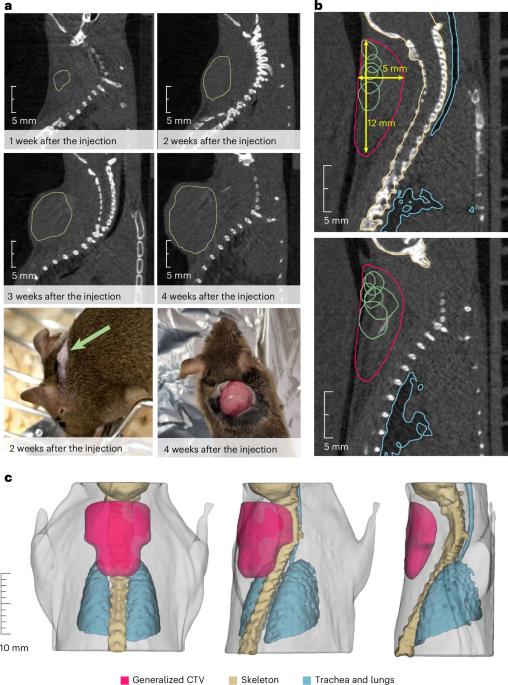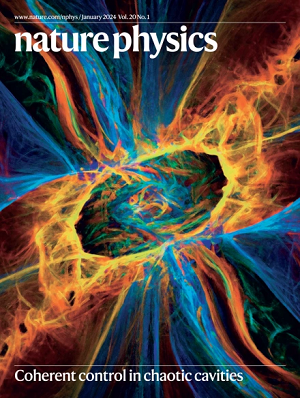放射性离子束图像引导治疗小鼠肿瘤
IF 18.4
1区 物理与天体物理
Q1 PHYSICS, MULTIDISCIPLINARY
引用次数: 0
摘要
质子或重离子的带电粒子治疗是最有效的放射治疗技术之一,但光束范围的不确定性限制了其疗效。放射性离子束是图像引导粒子治疗的理想选择,因为经过β+衰变的同位素可以用正电子发射断层扫描可视化。这允许粒子在体内分布的空间定位,这可以与在线光束范围验证的预期剂量沉积相关联。在这里,我们报告使用放射性11c离子束成功治疗小鼠骨肉瘤。肿瘤位于颈部,靠近脊髓,在这里,即使在光束范围内几毫米的偏差也可能导致意外的剂量沉积在脊柱和辐射诱发的脊髓病,脊髓损伤。我们以最高剂量20戈瑞达到完全的肿瘤控制,同时避免瘫痪。轻度神经系统副作用与脊柱正电子发射断层扫描测量的活动相关。肿瘤体积中活性的生物冲洗依赖于剂量,表明高剂量时血管损伤的潜在成分。这一实验标志着放射性离子束的未来临床应用迈出了一步。粒子治疗受光束范围的不确定性的影响。在这项研究中,用放射性离子束治疗小鼠颈部的肿瘤,这使得实时验证光束范围成为可能。本文章由计算机程序翻译,如有差异,请以英文原文为准。

Image-guided treatment of mouse tumours with radioactive ion beams
Charged particle therapy with protons or heavier ions is one of the most effective radiotherapy techniques, but uncertainties in the beam range can limit its efficacy. Radioactive ion beams are ideal for image-guided particle therapy because isotopes that undergo β+ decay can be visualized with positron emission tomography. This allows spatial localization of the particle distribution in vivo, which can be correlated with the expected dose deposition for online beam range verification. Here we report the successful treatment of a mouse osteosarcoma using a radioactive 11C-ion beam. The tumour was located in the neck, close to the spinal cord, where deviations of even a few millimetres in the beam range could lead to unintended dose deposition in the spine and radiation-induced myelopathy, an injury to the spinal cord. We achieved complete tumour control with the highest dose of 20 Gy while avoiding paralysis. Low-grade neurological side effects were correlated to the activity measured by positron emission tomography in the spine. The biological washout of the activity from the tumour volume was dependent on the dose, indicating a potential component of vascular damage at high doses. This experiment marks a step towards future clinical applications of radioactive ion beams. Particle therapy is subject to uncertainties in the range of the beam. In this study, tumours in the necks of mice were treated with radioactive ion beams, which enabled real-time verification of the beam range.
求助全文
通过发布文献求助,成功后即可免费获取论文全文。
去求助
来源期刊

Nature Physics
物理-物理:综合
CiteScore
30.40
自引率
2.00%
发文量
349
审稿时长
4-8 weeks
期刊介绍:
Nature Physics is dedicated to publishing top-tier original research in physics with a fair and rigorous review process. It provides high visibility and access to a broad readership, maintaining high standards in copy editing and production, ensuring rapid publication, and maintaining independence from academic societies and other vested interests.
The journal presents two main research paper formats: Letters and Articles. Alongside primary research, Nature Physics serves as a central source for valuable information within the physics community through Review Articles, News & Views, Research Highlights covering crucial developments across the physics literature, Commentaries, Book Reviews, and Correspondence.
 求助内容:
求助内容: 应助结果提醒方式:
应助结果提醒方式:


